Unforgettable Day Trips from Bordeaux: Truffle Hunting, Wine Adventures, and Cognac Tastings
- Candace Ahlfinger
- Aug 8
- 8 min read
Updated: 3 days ago
Day trips, or in our case excursions from the Viking Forseti river cruise, are abundant in the Bordeaux area and primarily focus on wine, food, and history.
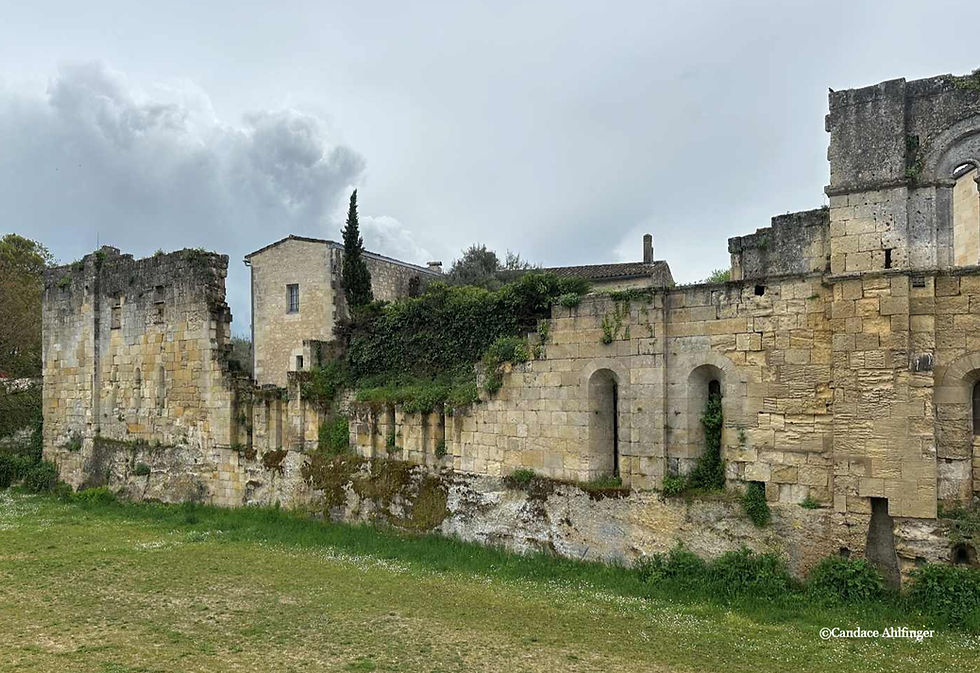
St. Emilion and Truffle Hunting
Our first trip was to Christine and Pierre Chaminade’s truffle farm—which may be the reason we chose this river cruise. The bus took us on a picturesque ride through the town of Libourne and into the countryside where we encountered Christine and her dog, the veteran truffle hunter. Truffle farmers originally used pigs to find truffles, but if you have ever been around pigs, you know how difficult it is to make them give up a piece of food in their mouth. Therefore, the farmers switched to dogs that must be trained to find truffles. (Watching a certain type of flies can also lead you to truffles, but they aren’t as dependable!)
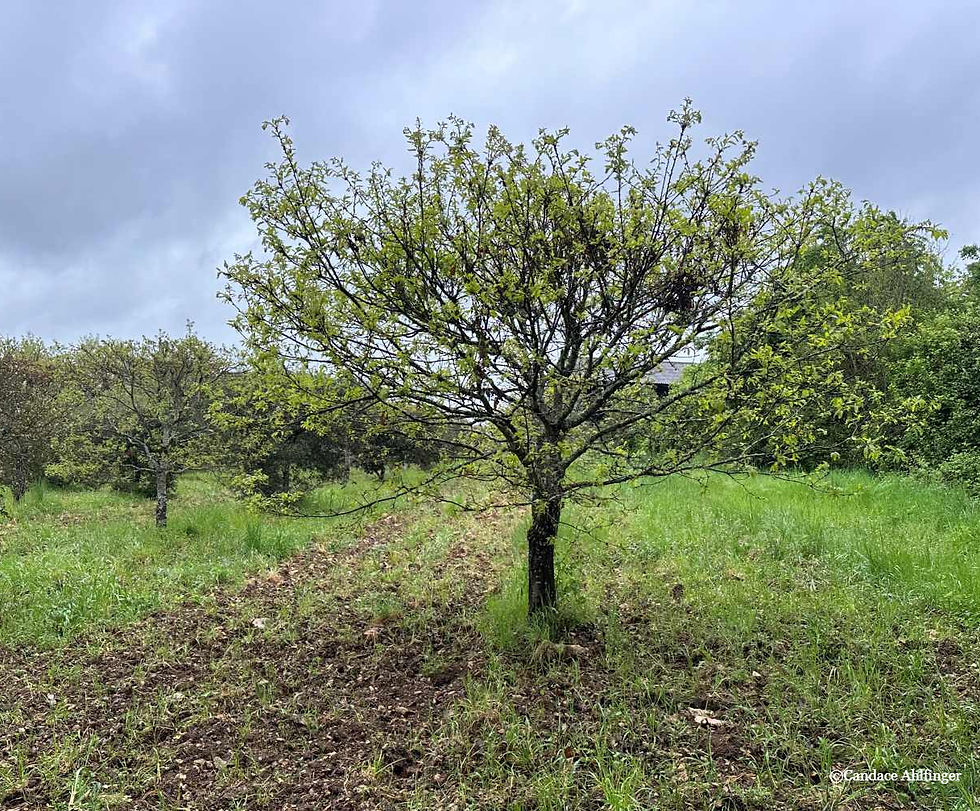
At the truffle farm, we learned so much about truffle growing and the symbiotic nature of mushrooms and oak trees. All oak trees are in a symbiotic relationship with some sort of mushrooms and it’s not easy to make certain that the oak trees you buy are paired with truffles or some inedible form of mushrooms. (I went home wondering if perhaps our oak trees could pair with truffles!) Christine was very honest that, because our visit didn’t fall during Perigord black truffle season, she had planted some truffles from her freezer for her dog to find. Watching the dog work with her was fun—and we were able to buy some truffle salt later in their home. (The Perigord black truffle sells for about $1,000 per 2.2 pounds.) Afterwards, we went to lunch in the nearby town of Sorges at Le Sorges where we had a regional specialty, scrambled eggs with shaved truffles.
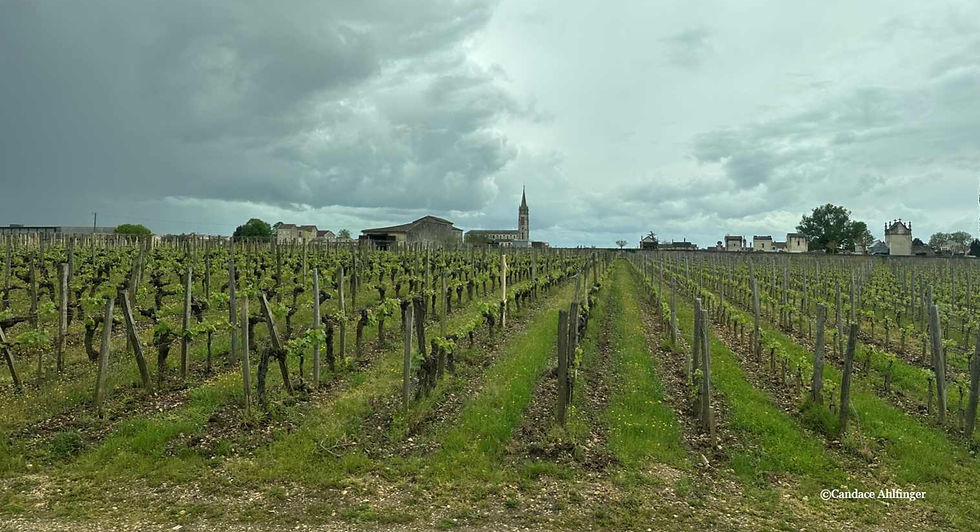
After lunch we headed to St. Emilion, famous for its wines and history. St. Emilion is surrounded by chateaux and vineyards on every turn. Every home seems to have its own vines. Some chateaux are as small as 10 acres and still have their own wine. In France, a chateau cannot buy grapes to use in their wine. They must grow their own grapes on site.
And on to wine…Bordeaux is the most famous wine-producing area in France with wines sometimes selling for thousands of dollars per bottle. Bordeaux wines are from either the Right Bank, primarily Merlots, or the Left Bank, primarily Cabernet Sauvignon. Wines are not classified by the grapes they contain but by the Chateau which makes them. (All of this was very confusing to me!) Wine connoisseurs must know which chateau produces the type of wine they like to make an informed choice of which wine to drink.
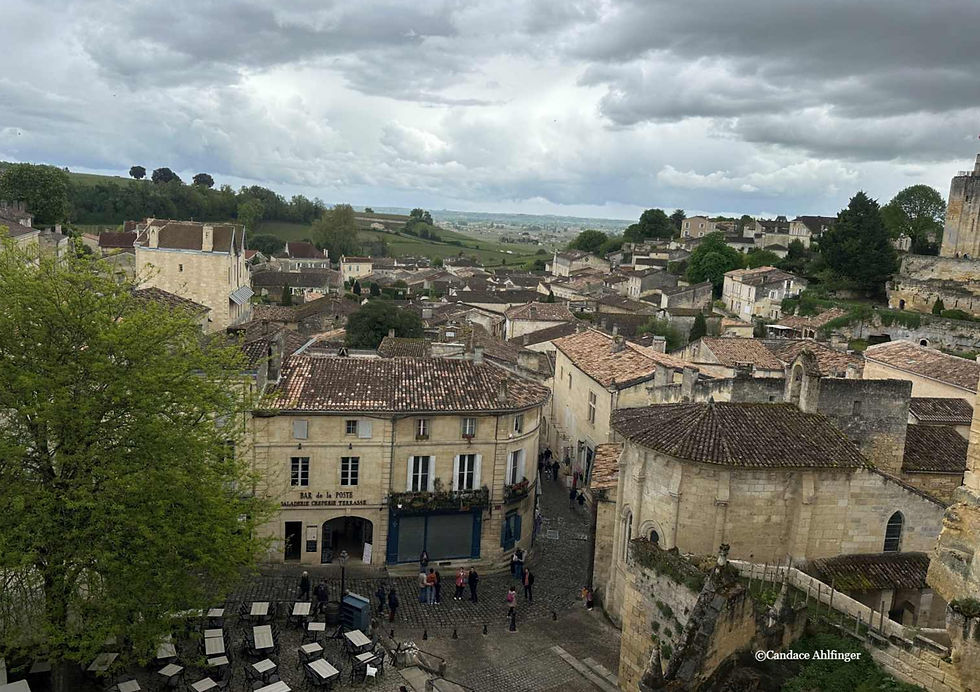
Located on the Right Bank of the Dordogne River, the history of St. Emilion and the Bordeaux area in general is very closely tied to wine. The Romans brought the first vines to the area in the 2nd century. St. Emilion is dotted with Roman ruins that provide historical significance to this walled city and have made it a UNESCO World Heritage site. For example, the Cardinal’s Palace, another major historical site in St. Emilion, was built in the 12th century.

During Roman rule religion, stone, and wines were the primary products. In fact, stone was quarried in such a way that the vines that were already in place were not disturbed. The city is named after the monk, Emilion, who arrived in the 8th century and devoted himself to prayer. He eventually founded a religious community in the town that would ultimately bear his name. We were disappointed that the monolithic church, the largest in Europe, was closed for repair. (The church is monolithic because it is carved from one humongous piece of stone.) Pilgrims still come through St. Emilion on their Camino de Santiago, thus cementing the city’s religious importance.
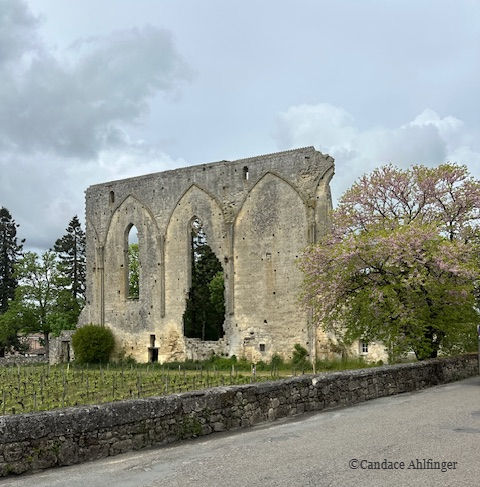
Much later, St. Emilion, like the rest of the Bordeaux area, flourished under the English rule of Henry II and Eleanor of England who made lucrative trade deals, especially for French wines, between France and England. St. Emilion was devastated when English rule ended in the 1450s during the Hundred Years’ War.
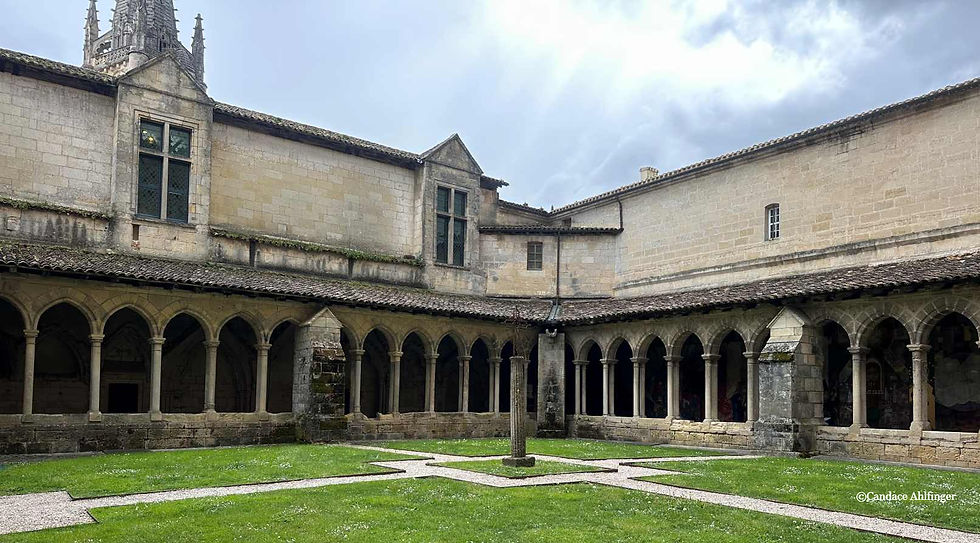
We enjoyed our walk through the Collegial Saint-Emilion church and its cloisters with their beautiful artwork. We next walked out to the overlook to get a bird’s-eye view of the multi-level medieval city. Unfortunately, the weather didn’t cooperate, so much of our limited time in St. Emilion was in rain. However, we were able to have coffee in the Cordeliers Cloister while watching the rain from our vantage point. We would have loved to have had more time to explore this historic city—the one bad part of taking a cruise or tour. There were so many wine stores, shops, and historical sites to see. We were, however, able to buy one of the original macaroons, at least original according to St. Emilion stories. (Legends of the original macaroons seem to abound!) The originals in St. Emilion are wafer-like single cookies instead of the colorful sandwich cookies that we were familiar with.
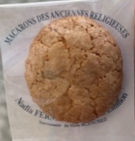
We could have spent more time in St. Emilion to explore all it has to offer, but a quick visit would have to suffice for now as we were back on our boat for the next stop. This time it was in Blaye, another city on the right bank of the Gironde Estuary, formed by the confluence of the Garonne and Dordogne Rivers.
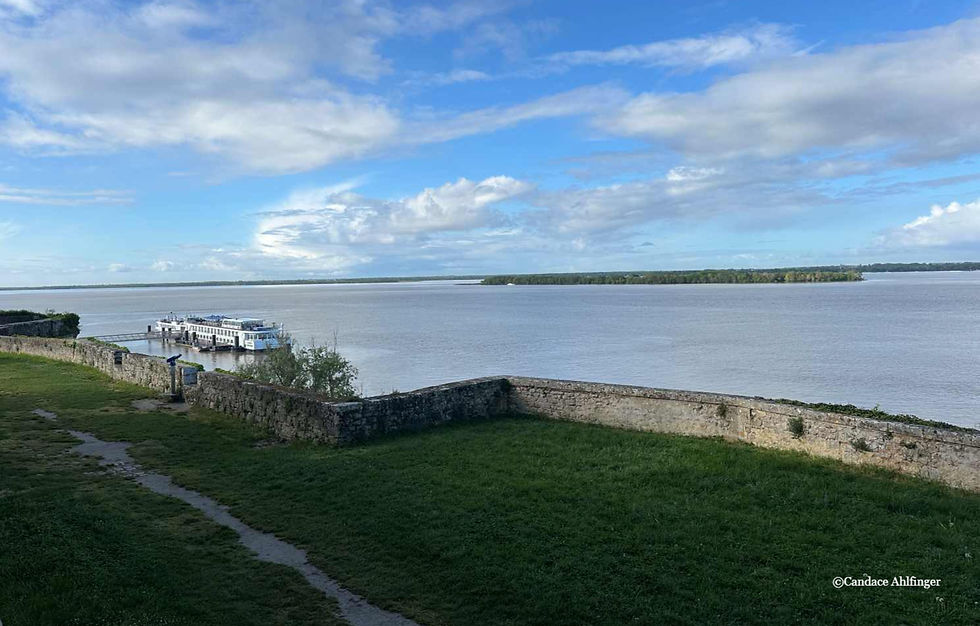
Blaye and Cognac at Camus
We had not been able to find much information about Blaye in our pre-trip research and were left with the feeling that the city doesn’t have a great deal to offer. That is definitely the wrong impression!

The next morning, we took a tour of Blaye with its Citadel as the highlight. Blaye was founded by the Romans but reached its peak in the 1600s when King Louis XIV ordered the Citadel to be built to control passage through the Gironde Estuary. (There are two other fortifications on the other sides of the estuary that were built so together they could target any enemy ship with cannon fire and so protect Bordeaux. The three, Citadel of Blaye, Fort Pate, and Fort Medoc made an invincible barrier and, together, are called the “Bolt of the Estuary.”) The citadel took only four years to build and served as an overlook to make certain merchants didn’t sneak out of the Bordeaux area without paying taxes. The famous architect Vauban built the Citadel with multiple safety measures that made it impossible to overthrow it. The Citadel is free to enter.
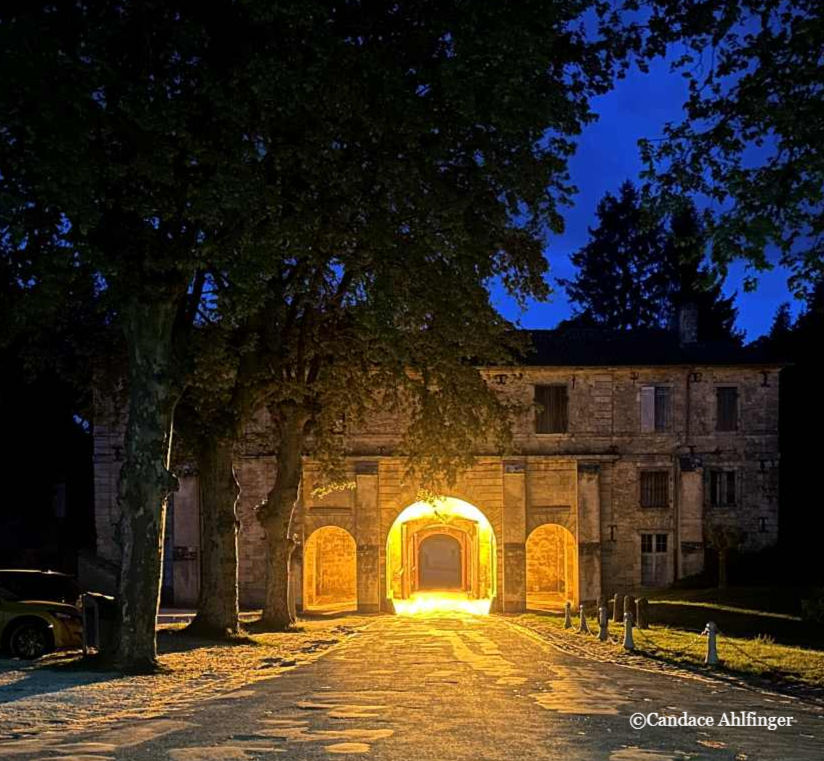
We enjoyed going back into town in the evening and strolling through it again. One interesting building in the Citadel is a convent—but for monks, not nuns. After all, who would ever think it was a good idea to put nuns in an enclosed area with hundreds of soldiers?!?! Blaye also has cafes, restaurants, markets, and shops that make it a fun place to visit.

Part of our day was a trip to the town of Cognac where, you guessed it, cognac is made. Cognac began as a way for the Dutch to ship French wine home to The Netherlands. Traditional wine ruined during voyages, so the idea of distilling wine was born. In “olden times” cognac houses could be identified by the black mold on them since the best cognac was distilled in darkened, humid rooms.
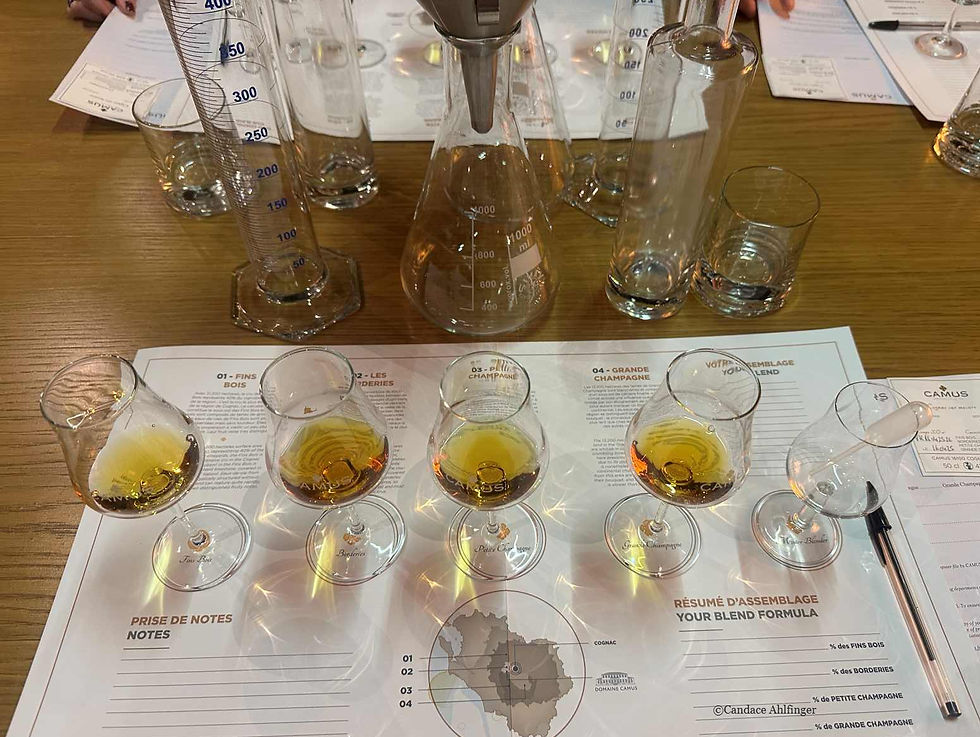
Our visit to the Maison de Camus to taste and make our own cognac was both educational and enjoyable. Even to a non-cognac drinker like me, the process was interesting, and we left with our personalized cognac packaged in a beautiful box. (We had our bottles shipped home since we were traveling with carry-on luggage only. And, to be honest, both of our cognacs were mixed to my husband’s taste since he is the one who will be drinking them!)
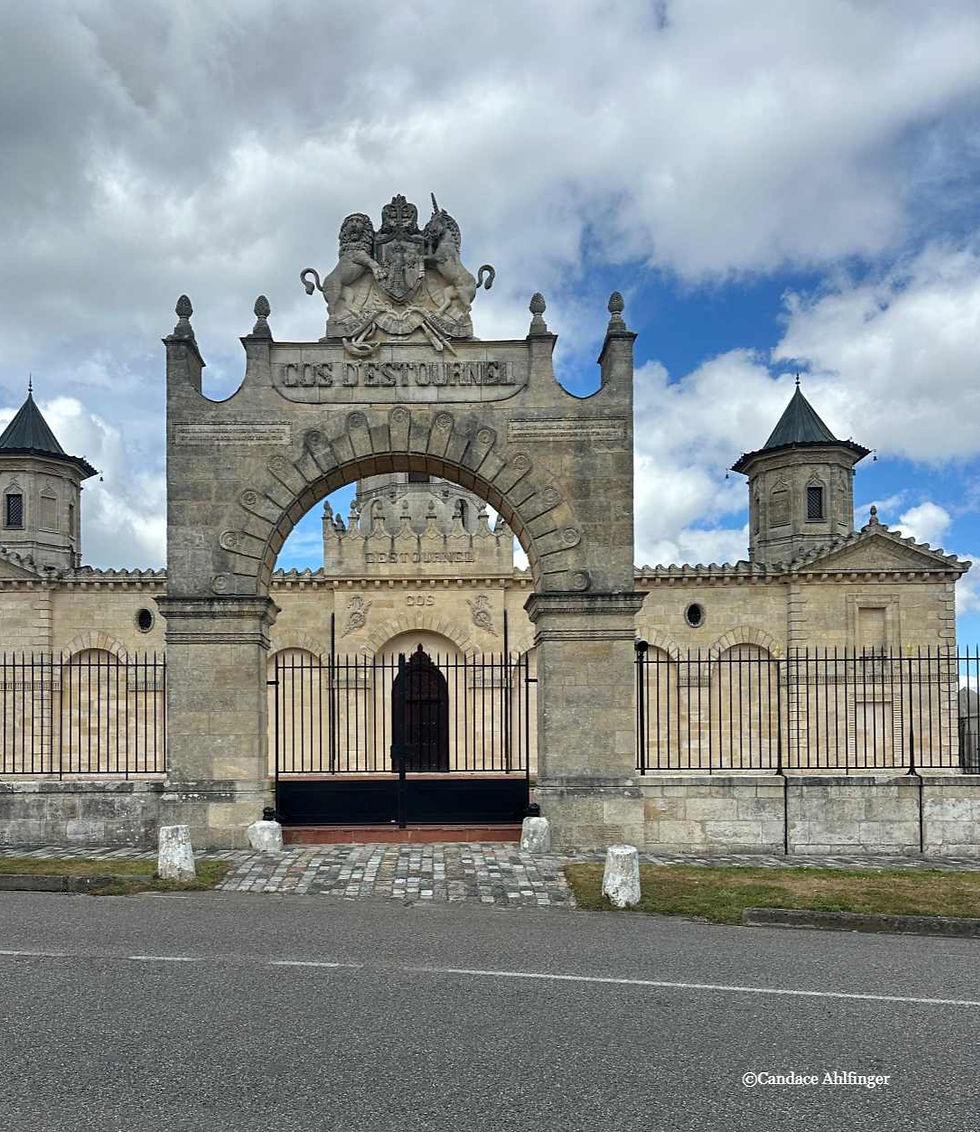
Medoc & Margaux Wine Country
The next day was filled with a bus tour of the seemingly hundreds of chateaux in the Medoc and Margaux regions on the Left Bank that make wonderful, expensive wines. The drive is actually called La Route de Chateaux. The grapevine leaves were just beginning to fill out to give us a hint of what the area would look like in just a few weeks with wonderfully green vines abounding throughout.
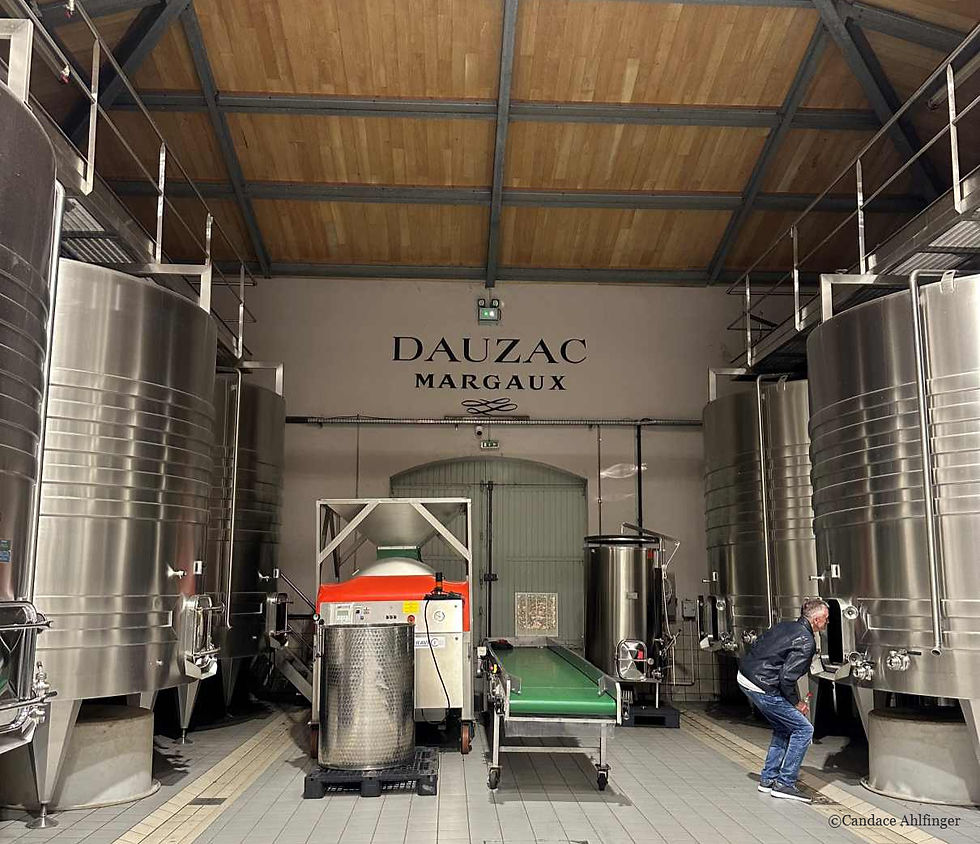
We viewed famous wineries such as some of those of Rothschild and Margaux and then toured Chateau Dauzac, to learn how they make their wines and the requirements that they must meet because of their appellation, the name that they have because of their location and adherence to the rules.
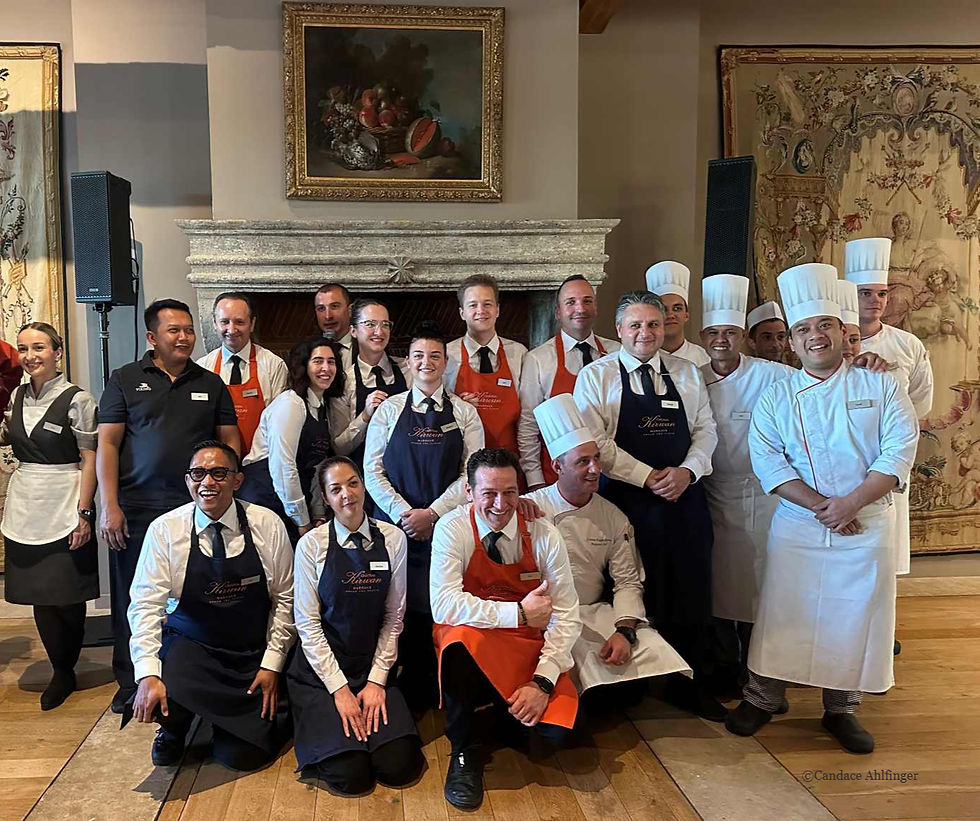
The day ended with one of the highlights of the trip—dinner at Chateau Kirwan. The surprise dinner was prepared and catered by the Viking Forseti staff and was fabulous. (The Viking staff even brought the dishes and beautiful decorations.) Of course, the wines were from Chateau Kirwan so our wine education continued, but the food and service from Viking was excellent beyond belief.
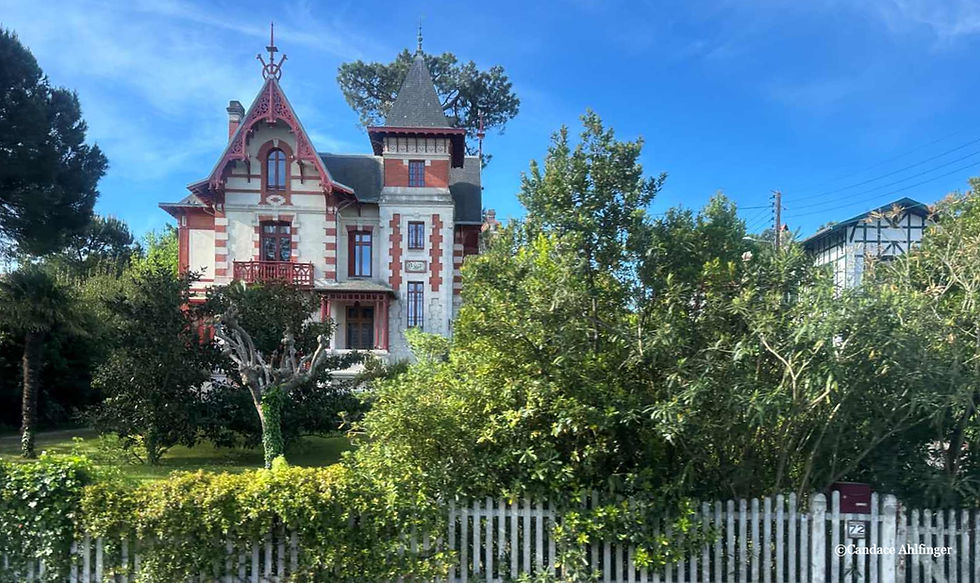
Arcachon
Arcachon, located on the bay by the same name, is a beautiful town officially founded by Napoleon III in 1857. The first building, built in 1832, was a spa for the many visitors who came during the summer. When tuberculosis began its vicious attack, people began coming year-round because of the health benefits of the water and its surrounding forest. To meet demand, the Pereire brothers built 60 villas, many fashioned after those in Switzerland. Of course, others came after seeing the profitability of the area. Growth was so rapid that there were catalogues for visitors to choose the villa they wanted.
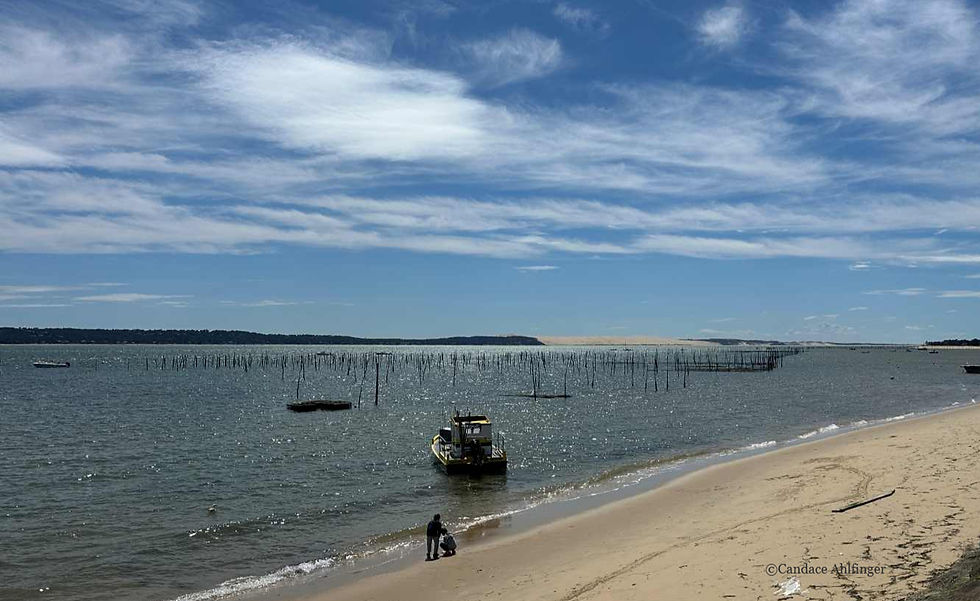
We made our way to the busy marina and then via boat, Le Salaxo, to Cap Ferret, passing Bird Island with its houses on stilts on our way. In addition to tourism, oyster farming is a major industry. It was intriguing to see how baby oysters begin. In fact, Arcachon is the major producer of baby oysters in the world. Other oyster farmers purchase the babies to be grown on their farms.
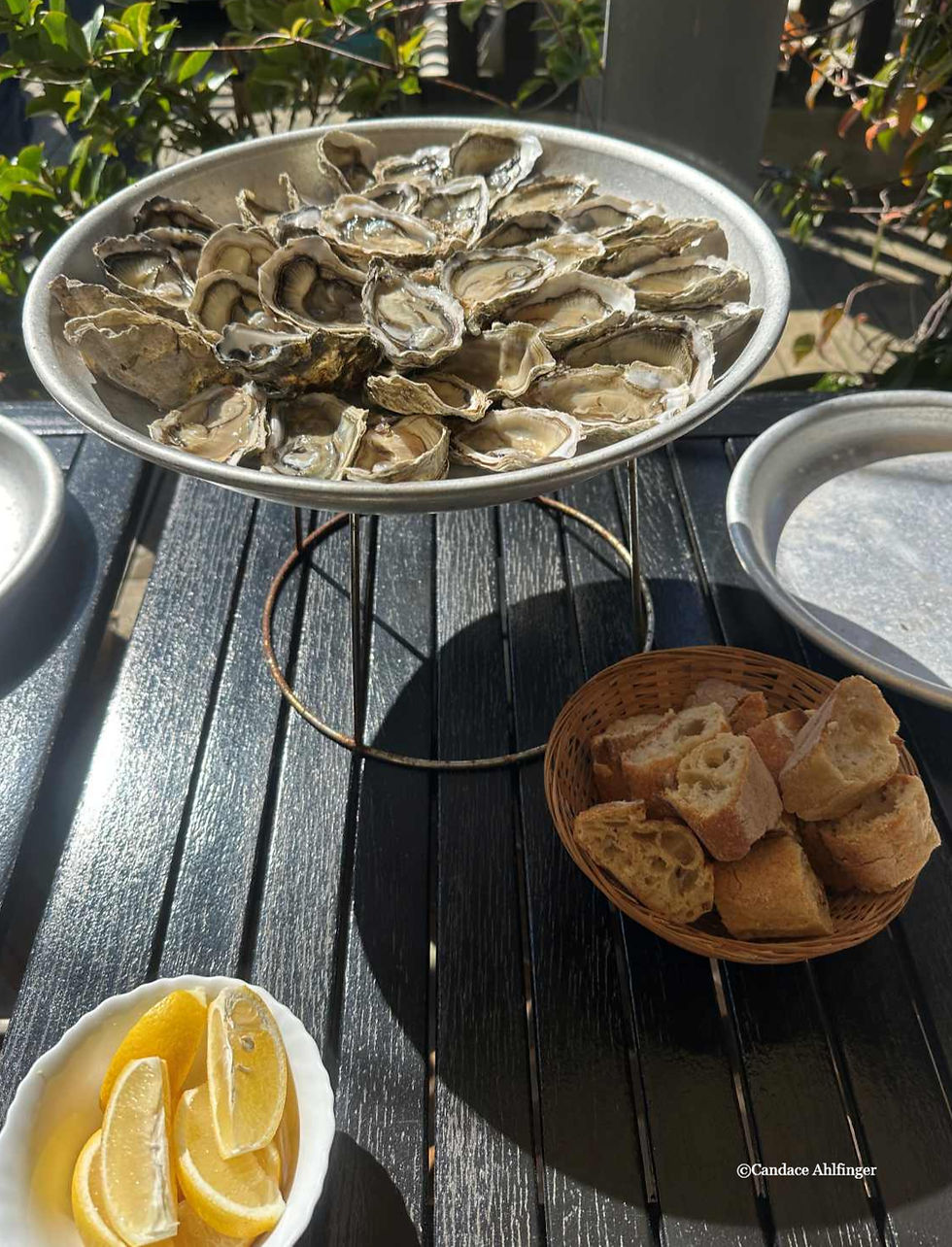
Our goal for the tour was to sample great oysters at Chez Yannick in a small house right on the water. These small houses can only be owned by oyster farmers, and, in fact, they own only the house, not the land. Across the water from Cap Ferret, we could see the tallest sand dune in Europe, Dune du Pilat.
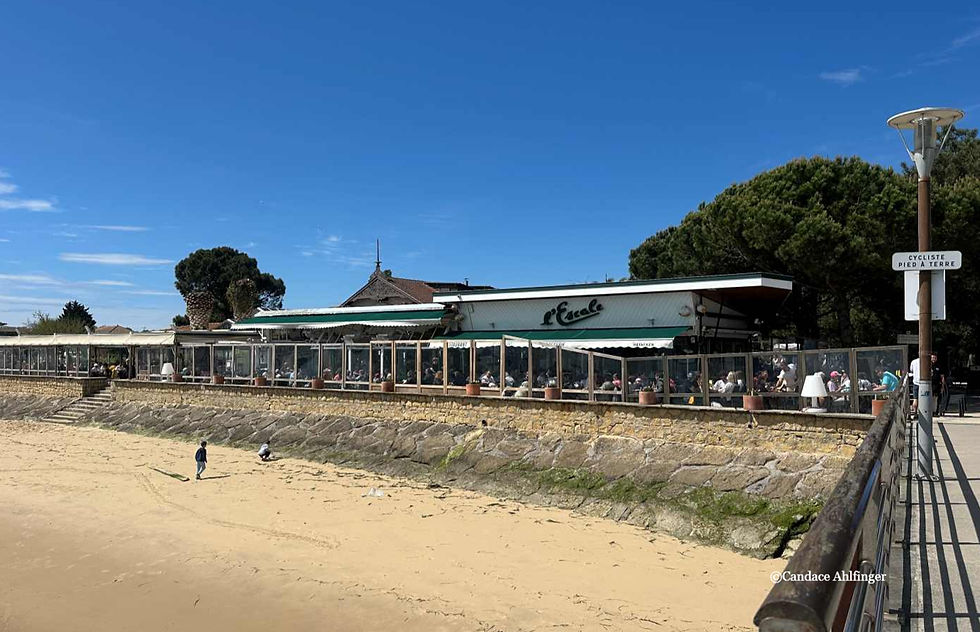
We had lunch at L’Escale on Cap Ferret overlooking the beautiful waters. The seafood meal was accompanied by a local white wine. (There is no shortage of wine in this area!) There is a small shopping area and more of the town near the restaurant, but time was too limited to take it all in. Back on the boat to the hilarious captain and our guide and then a return to our ship where we ended the day with a relaxing dinner. (Again, all of these locations can be visited as day trips from Bordeaux, but we took advantage of the excursions offered on our Viking Forseti cruise.)
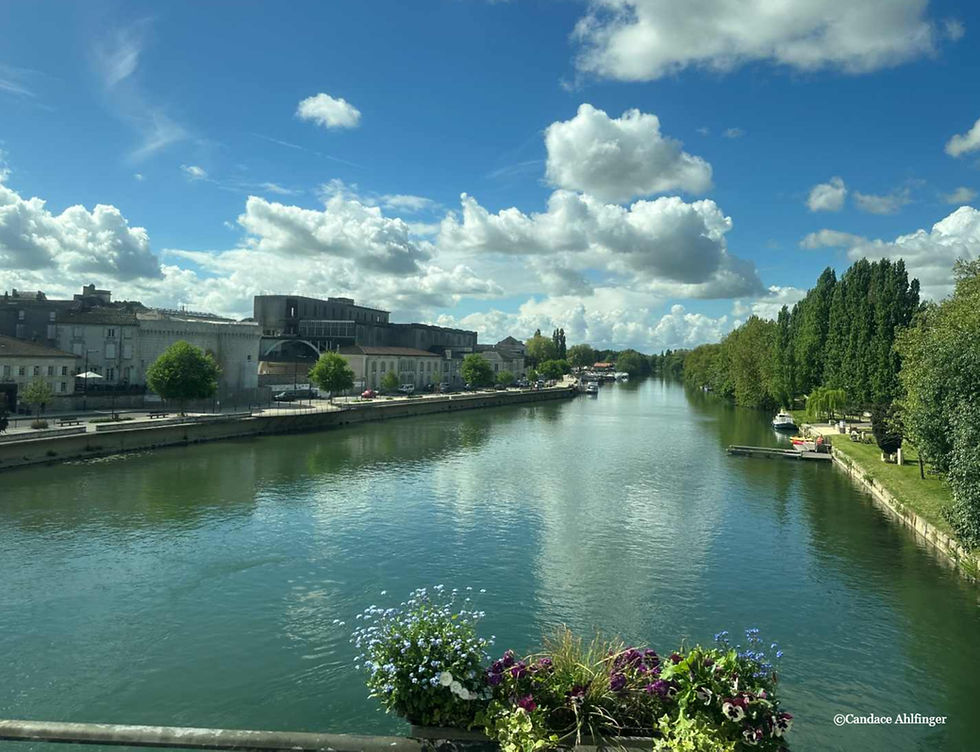
The joy of river cruising? Being able to generally walk into towns during the evening and not having to repack. Also, you can take pre-planned excursions so you have that planning off your shoulders. The bad of river cruises and tours? Not having enough time in certain places.
I'd love for you to follow our adventure in France, Spain, and Andorra that I will be posting here. Please follow this link to learn more about our wonderful visit to Bordeaux.
Learn more about our next stop in San Sebastian, Spain by clicking here.
Also, please sign up to receive notices of when I post about our recent trips. Just click here and leave your email address!
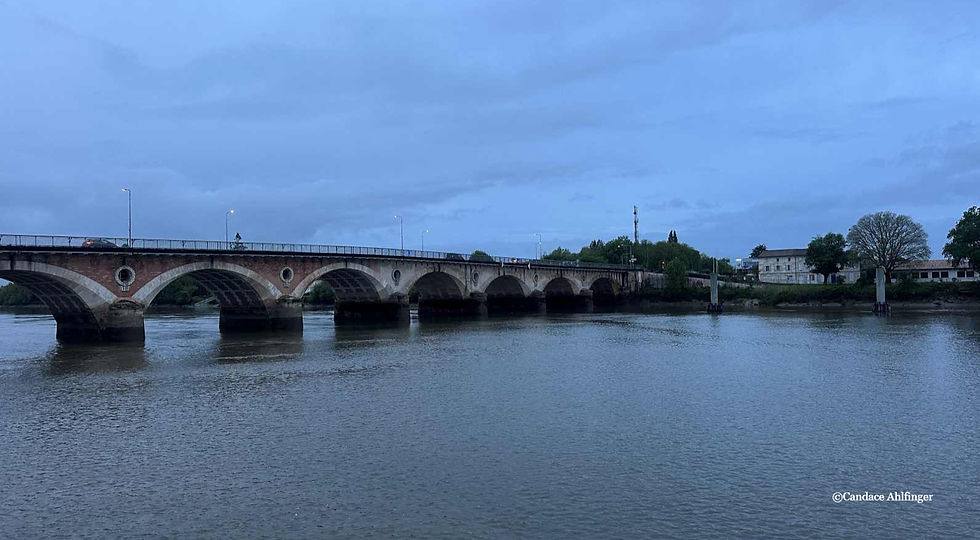





Comments